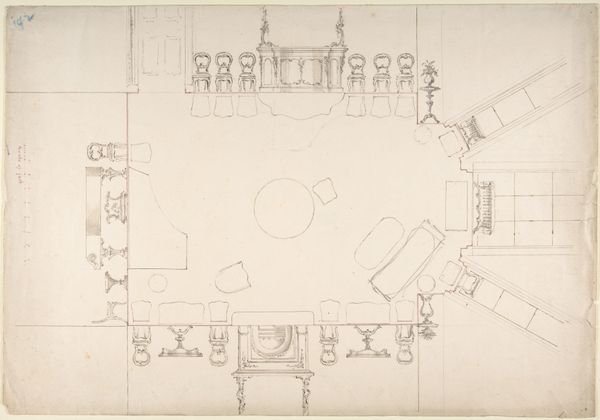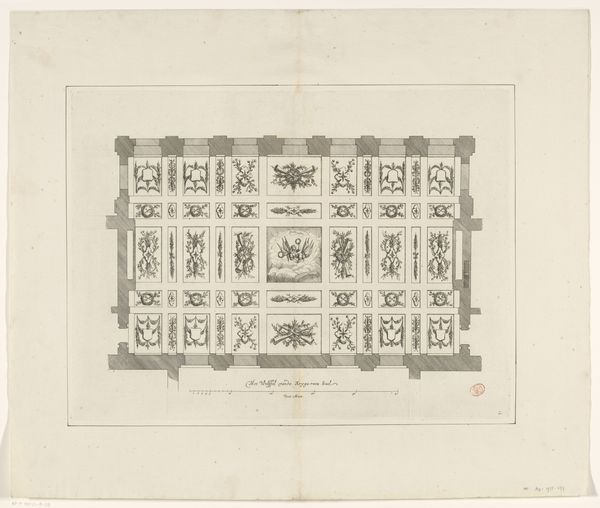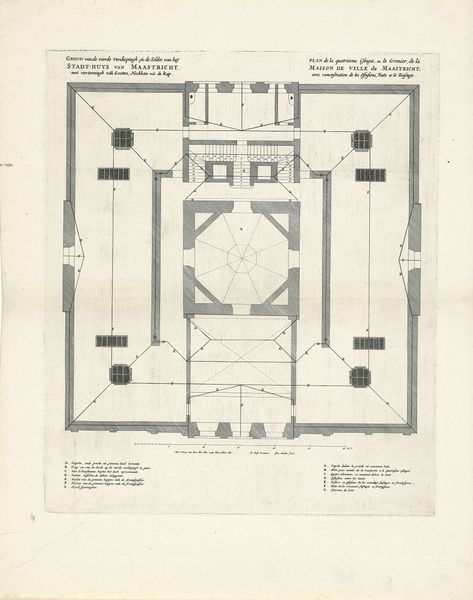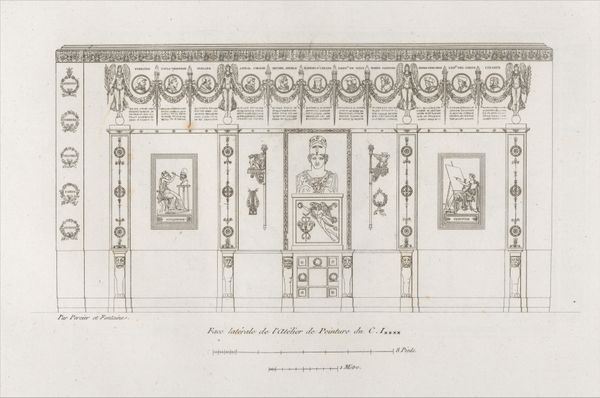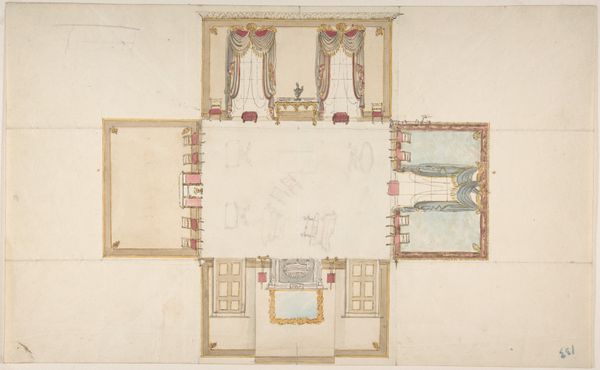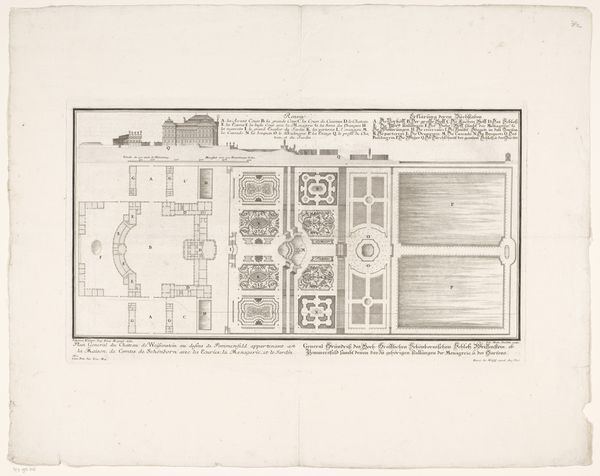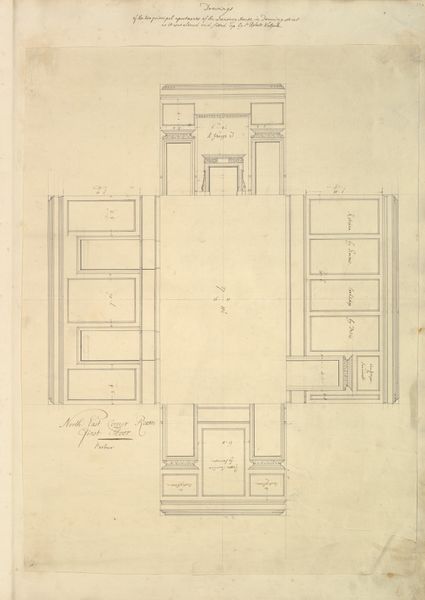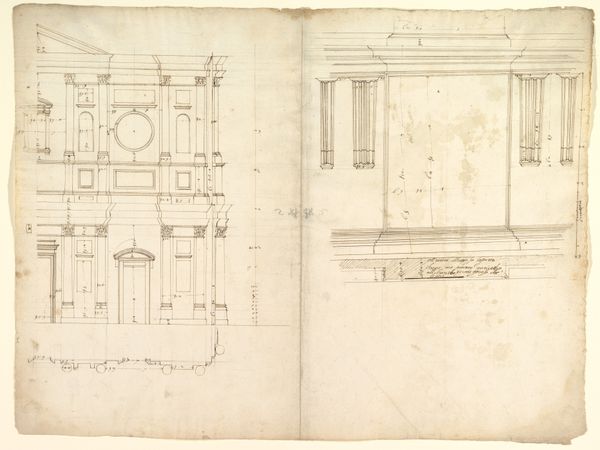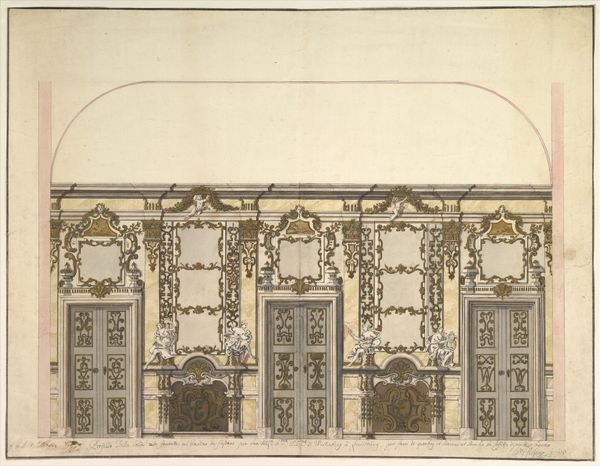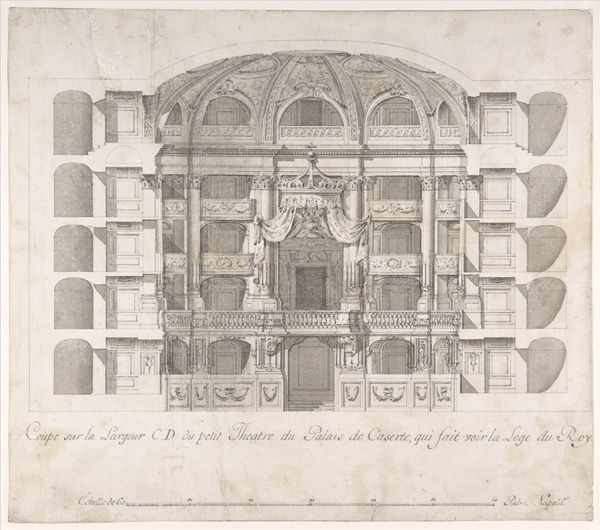
Design for the Dining Room at Kirtlington Park, Oxfordshire 1747 - 1748
0:00
0:00
drawing, print, architecture
#
drawing
#
baroque
# print
#
perspective
#
history-painting
#
watercolor
#
architecture
Dimensions: Sheet: 17 15/16 x 20 1/2 in. (45.6 x 52.1 cm)
Copyright: Public Domain
Curator: Looking at this drawing, one is immediately struck by the sense of meticulous detail, as if every line carries intention and history. Editor: I agree, though it also feels strangely sterile, doesn't it? Like a stage set before the actors arrive. I’m drawn to the materials, though – it's a watercolor and print design by John Sanderson, dating to 1747-1748. It’s entitled "Design for the Dining Room at Kirtlington Park, Oxfordshire" and is now housed here at the Met. Curator: Ah yes, Oxfordshire! This design becomes a window into the aspirations of the English Baroque era, where grand historical narratives mingled with the desire to establish authority through opulent display. Note the history painting in the panels on each side—clear references to idealized pasts. Editor: I'm interested in how the architectural rendering actually transforms history into consumable form. Each carefully printed decorative detail speaks volumes about the means to bring such splendor to life. I can't help but think of the laborers, artisans, and the raw material sourced. Curator: Absolutely. Those carefully selected mythological scenes and ornate carvings weren’t mere decoration but coded symbols that spoke directly to the educated viewer. Each design decision was intentional, reaffirming the patron’s place within a continuous lineage of power and knowledge. The very shape and positioning reflect certain ritual uses of domestic space for social life, conversation and feasting. Editor: That’s fascinating, particularly how they mirror and play off one another to communicate wealth and taste, all brought to life from pigment and paper. Considering that each decorative gesture had to be printed and mounted—the economic and manual capital seems staggering by today's standards. Curator: This blueprint serves as more than just a set of instructions. It encapsulates a world of inherited meanings, where every visual element is a thread in a complex web of historical consciousness. Editor: For me, seeing it is about more than inherited meaning – its about thinking of its manufacture and the cultural dynamics within 18th century England – to envision such architectural spaces is quite interesting in itself, now.
Comments
No comments
Be the first to comment and join the conversation on the ultimate creative platform.

